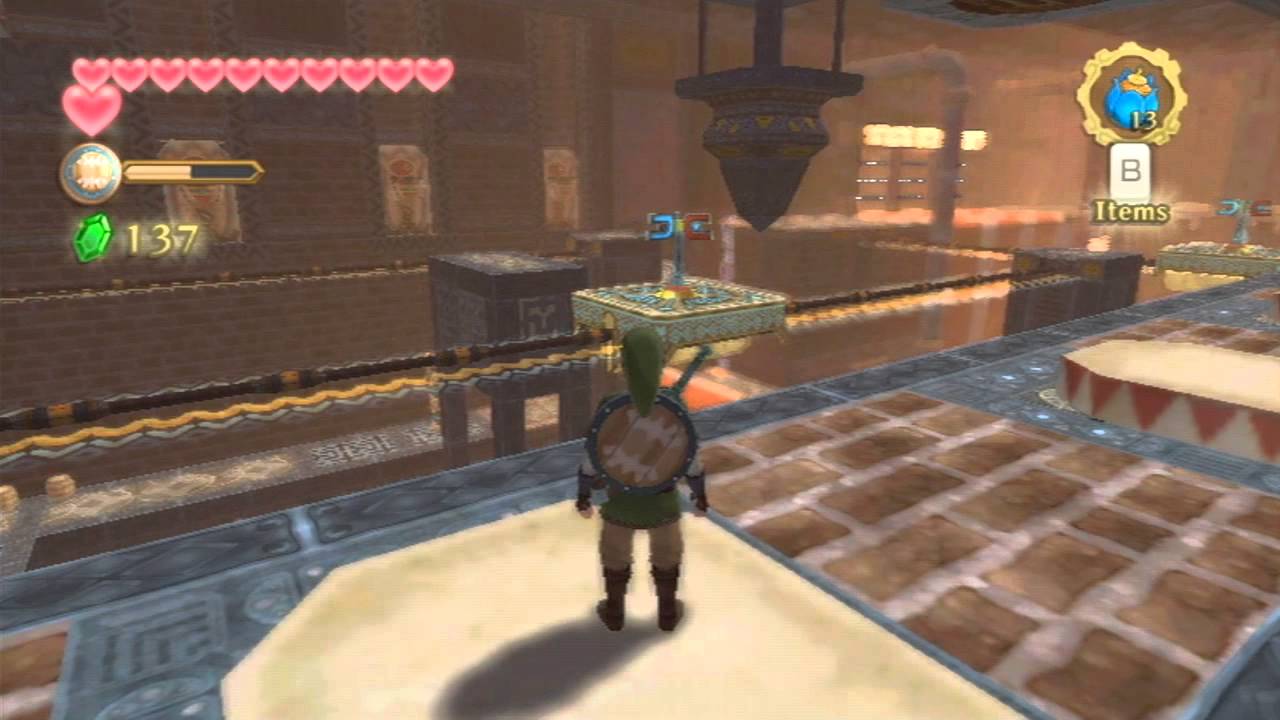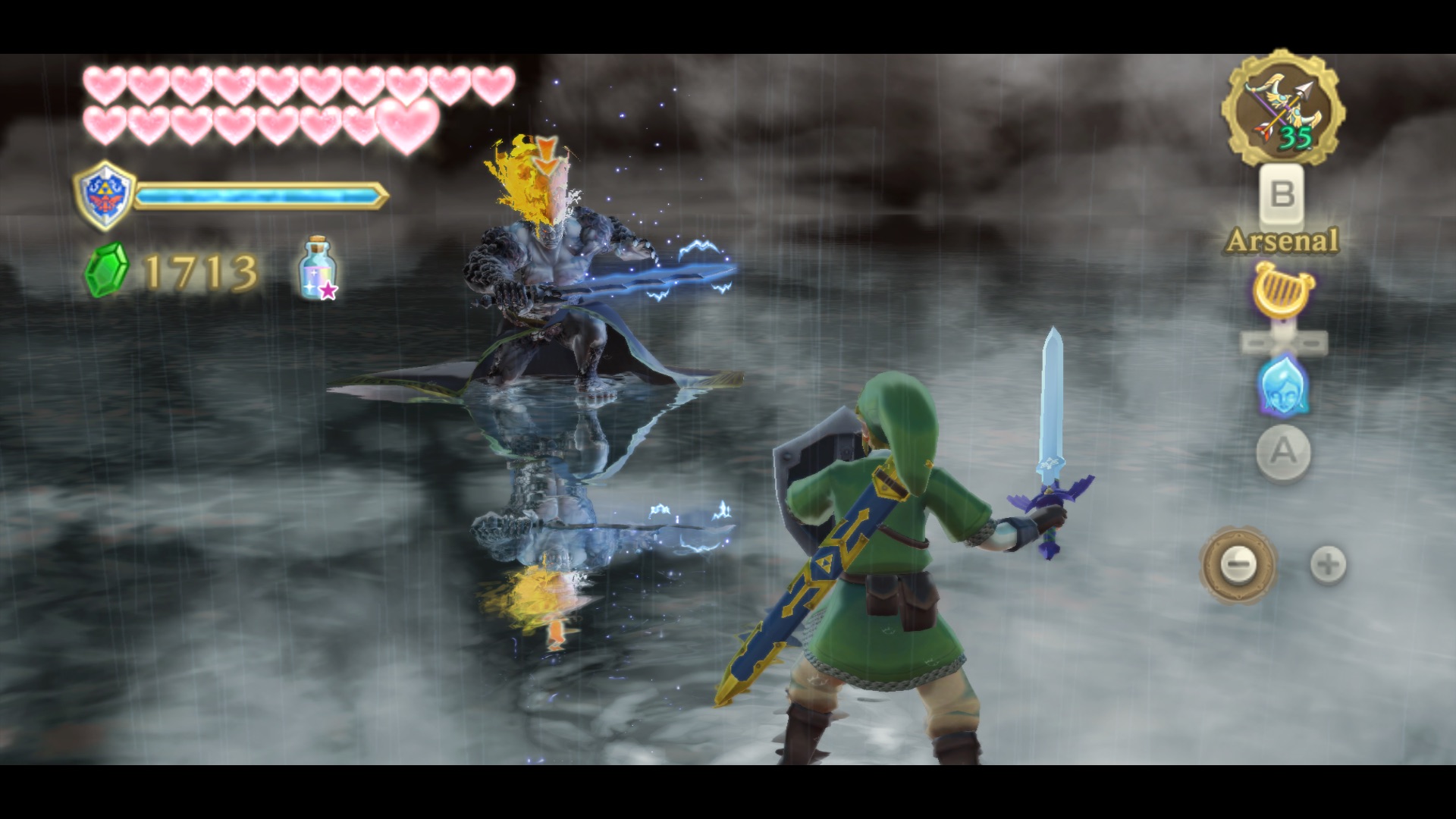The Legend of Zelda: Skyward Sword is the most unique Zelda game to come out since The Wind Waker, yet somehow, it is a very divisive game within the Zelda fandom. Some didn’t like the fact that the overworld was disconnected, others didn’t enjoy the motion controls or had bad experiences with them. Despite that though, Skyward Sword is the best Zelda game to date, setting the foundation for the entire series and balancing incredibly unique gameplay with a very immersive story to create one of gaming’s finest achievements. It is the crowning achievement of the Wii, fully realizing the console’s potential; it’s only a shame that this happened at the very end of the console’s life cycle.
First, let’s cover the story. Skyward Sword takes place, presumably, thousands of years before Ocarina of Time. It is an origin story not only for the Master Sword, but also for the reincarnation cycle of Zelda, Link, and Ganondorf, whose fates are constantly intertwined. It is the heaviest story that we have gotten in a Zelda game, and although Zelda is somewhat of a damsel in distress at the end of the game, she is an incredibly strong character throughout the game. It is her relationship with Link which drives the story, and Zelda goes on her own spiritual journey herself as she unlocks her true self as the Goddess Hylia.

The best incarnation of Zelda
The lore in this game is, simply put, epic, but it never takes away from the gameplay experience of the title. There is a perfect balance between the two and although there are parts of the game that would be considered “filler”, it never takes away from the game. This is the first Zelda game where I was actually so immersed in the title that I felt as if I was Link; I felt what he felt, and I felt as if I went on a spiritual journey of my own. There are some cutscenes that are very exposition-heavy, such as when Zelda reveals to Link the backstory regarding Hylia, Demise, and the Triforce, but this is balanced by the sheer amount of gameplay present. It is a fun-filled adventure which has a perfect balance of darkness and light, something that Twilight Princess failed to achieve. The NPCs are actually interesting and develop over time, most of all, Fledge. This has been missing in Zelda for a long time, even to this day. I haven’t felt this invested in non-playable characters since the days of Majora’s Mask and Ocarina of Time, and that is saying something.

One of the best villains in the series, Ghirahim
While many felt that the motion controls were a total pain in Skyward Sword, I would have to disagree. Fighting enemies became a puzzle within themselves, which was fascinating. Being able to control Link’s sword simply by swinging it, with the implementation of the Motion Plus feature on the Wii Remote, made me feel as if I was in the game. It felt so much more satisfying than simply pressing a button. While rolling a bomb did become somewhat annoying, I can overlook that because of how well motion controls were implemented in Skyward Sword. Firing the Bow was possibly the most rewarding aspect of the motion controls; it was integrated seamlessly. While some felt like Fi was the most annoying of Link’s companion, one has to keep in mind that she came directly after Midna, who was Link’s greatest companion. Fi was no more annoying than Navi, and I personally had no problem with her. Many disliked the Silent Realms, but I felt they were a great change of pace for the game and presented a very unique challenge to the game. Stripped of all his weapons, Link needed to collect the Tears of Light all on his own, without his guide. Through this, he became stronger and grew spiritually, and I felt that this resonated with me on a personal level. I was completely invested in Link’s journey and his quest to grow both into the hero we all know and love and complete the Master Sword was compelling.

The Best Dungeons
The dungeons in Skyward Sword were some of the best in the series, along with the bosses which followed. Some of the standouts are the Lanayru Mining Facility, the Sandship, the Ancient Cistern, and the Fire Sanctuary. I define a Zelda game’s difficulty by its puzzles, and by playing this game blind without any help, I found the puzzles really made me think quite a bit in a way that hasn’t challenged me since Ocarina of Time. Koloktos is probably the one boss that stands out the most and is one of the most epic boss battles in the entire series, as well as a difficult matchup. Levias was a really cool fight; I only wish there were more battles on your Loft Wing! Each boss fight with Ghirahim takes advantage of the Wii Motion Plus and is downright fun, and this is what makes Skyward Sword such a great game. Ghirahim’s final form is epic, and the Demise battle is difficult, epic, and thoroughly enjoyable all at the same time.

An Epic final battle with Demise
Skyward Sword is not necessarily an easy game from a combat perspective. There is a reason why you start out with five hearts rather than the typical three as you do in every other Zelda game. Weapon and potion upgrades are a welcome addition to the series and add a new component to the franchise to help those who may encounter some difficulty along the way and allow you to accumulate additional gear. Hero Mode is even more challenging but very fun. While many complain about the lack of an open world, I found that each section in the game is incredibly dense with so much exploration to be found and a lot of secrets to be found. While dowsing is helpful to new players, I actually never used it in my first playthrough except to find Gratitude Crystals, although I still 100 percented the game. It took me a little over 80 hours, as I spent plenty of time taking in the game. Exploring blind was so much more fun and despite there not being an open world, it still stayed true to the spirit of the Zelda franchise.

Transforming the Master Sword
Skyward Sword has a wonderful story, exceptional gameplay, a unique art style, and accumulates everything from past Zelda titles and tries to be something different, especially with its watercolor effect which Miyamoto implemented. It still maintains the spirit of the series, but it also takes some chances and does something new with the franchise. It is the best Zelda game to date, with some of the best boss battles, dungeons, puzzles, and story that the series has to offer. It is incredibly immersive to the point that you feel you are Link, and this is something that the series has strived for, but has not achieved until this point. While Ocarina of Time is heralded as one of the greatest games of all time, it is outdated. Although it still plays wonderfully, technology has advanced and Skyward Sword has taken advantage of this. The game is the best Zelda title, even topping Breath of the Wild.
